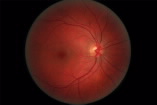FOR IMMEDIATE RELEASE
ACS News Service Weekly PressPac: February 24, 2010
ACS News Service Weekly PressPac: February 24, 2010
Contact
- Science Inquiries: Michael Woods, Editor, 202-872-6293
- General Inquiries: Michael Bernstein, 202-872-6042
![]()
A laser technique best known for its use to remove unwanted tattoos from the skin is finding a second life in preserving great sculptures, paintings and other works of art, according to an article in ACS’ monthly journal, Accounts of Chemical Research. The technique, called laser ablation, involves removing material from a solid surface by vaporizing the material with a laser beam...
![]()

Scientists are reporting an advance toward scavenging energy from walking, breathing, and other natural body movements to power electronic devices like cell phones and heart pacemakers. In a study in ACS’ monthly journal, Nano Letters, they describe development of flexible, biocompatible rubber films for use in implantable or wearable energy harvesting systems. The material could be used, for instance, to harvest energy from the motion of...
![]()

In a finding that overturns conventional wisdom, scientists are reporting the first discovery of the female sex hormone progesterone in a plant. Until now, scientists thought that only animals could make progesterone. A steroid hormone, secreted by the ovaries, progesterone prepares the uterus for pregnancy and maintains pregnancy. A synthetic version, progestin, is used in birth control pills and other medications. The discovery...
![]()

Scientists in Massachusetts are reporting new evidence that certain high blood pressure drugs may be useful in preventing and treating diabetic retinopathy, the leading cause of vision loss in people with diabetes. The study, the largest to date on proteins in the retina, could lead to new ways to prevent or treat the sight-threatening disease, they say. The findings are in ACS’ Journal of...
![]()
Subatomic particles called neutrons are poised to play a big role in fighting HIV, slowing global warming, and improving manufacturing processes. The reason: They are the focus of a process called neutron scattering that provides unprecedented ways to study the chemistry of a wide range of important materials, including coal and biological cells, according to a fascinating article in Chemical & Engineering News (C&EN), ACS’ weekly newsmagazine. C&EN Associate Editor Jyllian Kemsley notes that neutrons have properties…
![]()
Journalists’ Resources

- Media Registration ACS 239th National Meeting, March 21-25, 2010, San Francisco
News media accreditation and housing reservations are now open for the 239th National Meeting & Exhibition of the American Chemical Society (ACS), the world’s largest scientific society. It will be held March 21-25 in San Francisco. Reporters and editors can apply for complimentary registration now at meeting registration. Hotel reservations and other information are available at housing. - Press releases, briefings, and more from ACS’ 238th National Meeting
www.eurekalert.org/acsmeet.php
http://www.ustream.tv/channel/acslive - Must-reads from C&EN: Spider sex attractants seduced for science
Two newly discovered spider sex pheromones, or sex attractants, may help scientists seduce some arachnids out of international shipping containers, preventing them from spreading to other countries and becoming invasive species. For the full text: spiders. - ACS Pressroom Blog The ACS Office of Public Affairs’ (OPA) pressroom blog highlights research from ACS’ 38 peer-reviewed journals and National Meetings.
- Bytesize Science blog Educators and kids, put on your thinking caps: The American Chemical Society has a blog for Bytesize Science, a science podcast for kids of all ages.
- ACS satellite pressroom: Daily news blasts on Twitter
The satellite press room has become one of the most popular science news sites on Twitter. To get our news blasts and updates, create a free account at https://twitter.com/signup. Then visit http://twitter.com/ACSpressroom and click the ‘join’ button beneath the press room logo. - C&EN on Twitter
Follow @cenmag <http://twitter.com/cenmag> for the latest news in chemistry and dispatches from our blog, C&ENtral Science <http://centralscience.org>. - ACS Press Releases
Press releases on a variety of chemistry-related topics. - General Chemistry Glossary
- Chemical Abstracts Service (CAS) Web site on everyday chemicals
Whether you want to learn more about caffeine, benzoyl peroxide (acne treatment), sodium chloride (table salt), or some other familiar chemical, CAS Common Chemistry can help. The new Web site provides non-chemists and others with useful information about everyday chemicals by searching either a chemical name or a corresponding CAS Registry Number. The site includes about 7,800 chemicals of general interest as well as all 118 elements from the Periodic Table, providing alternative names, molecular structures, a Wikipedia link, and other information. - Science Connections from CAS
CAS - Science Connections is a series of articles that showcases the value of CAS databases in light of important general-interest science and technology news. Topics range from fruit flies to Nobel Prize winners, with the CAS - Science Connections series pointing to CAS databases for a more complete understanding of the latest news.
- Bytesize Science
Bytesize Science is a science podcast for kids of all ages that entertains and educates, with new high-definition video podcasts and some episodes in Spanish. Subscribe to Bytesize Science using iTunes. No iTunes? No problem. Listen to the latest episodes of Bytesize Science in your web browser. - Global Challenges/Chemistry Solutions
This special series of ACS podcasts focuses on some of the 21st Century’s most daunting challenges, and how chemists and other scientists are finding solutions. Subscribe at iTunes or listen and access other resources at the ACS web site www.acs.org/GlobalChallenges. - Science Elements
Science Elements is a podcast of PressPac contents that makes cutting-edge scientific discoveries from ACS journals available to a broader public audience. Subscribe to Science Elements using iTunes. Listen to the latest episodes of Science Elements in your web browser. - SciFinder® Podcasts
Interested in healthful plant phytochemicals, nanotechnology, or green chemistry? Check out the SciFinder series of podcasts, which explore a vast array of current interest topics and new discoveries in the 21st century. The SciFinder podcasts are available in English, Chinese, Japanese, and Portuguese.
Note to Journalists and Other Viewers
This is the latest American Chemical Society (ACS) Office of Public Affairs Weekly PressPac with news from ACS’ 38 peer-reviewed journals and Chemical & Engineering News.
This information is intended for your personal use in news gathering and reporting and should not be distributed to others. Anyone using advance ACS Office of Public Affairs Weekly PressPac information for stocks or securities dealing may be guilty of insider trading under the federal Securities Exchange Act of 1934.
Please cite the individual journal, or the American Chemical Society, as the source of this information.
The American Chemical Society is a nonprofit organization chartered by the U.S. Congress. With more than 161,000 members, ACS is the world’s largest scientific society and a global leader in providing access to chemistry-related research through its multiple databases, peer-reviewed journals and scientific conferences. Its main offices are in Washington, D.C., and Columbus, Ohio.

